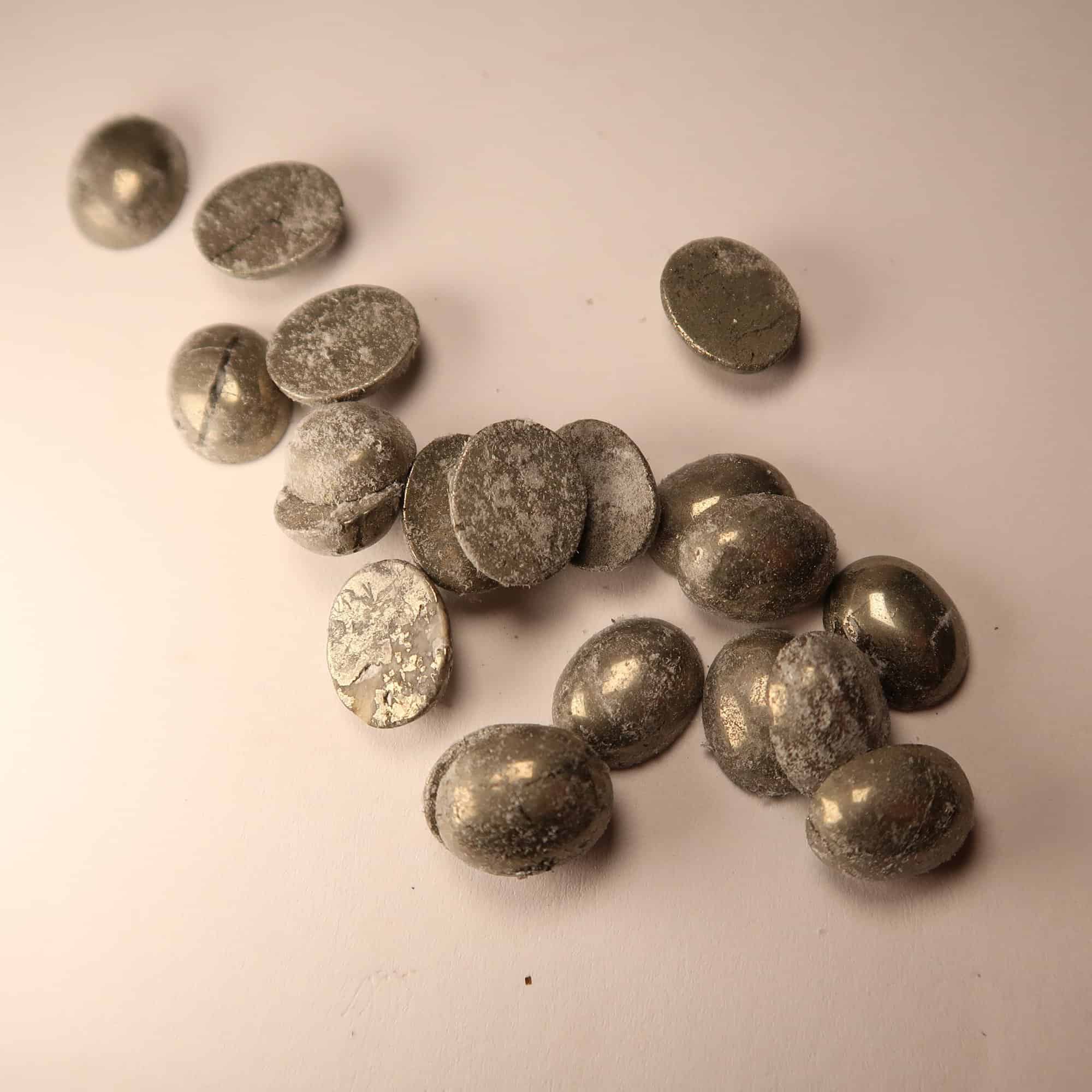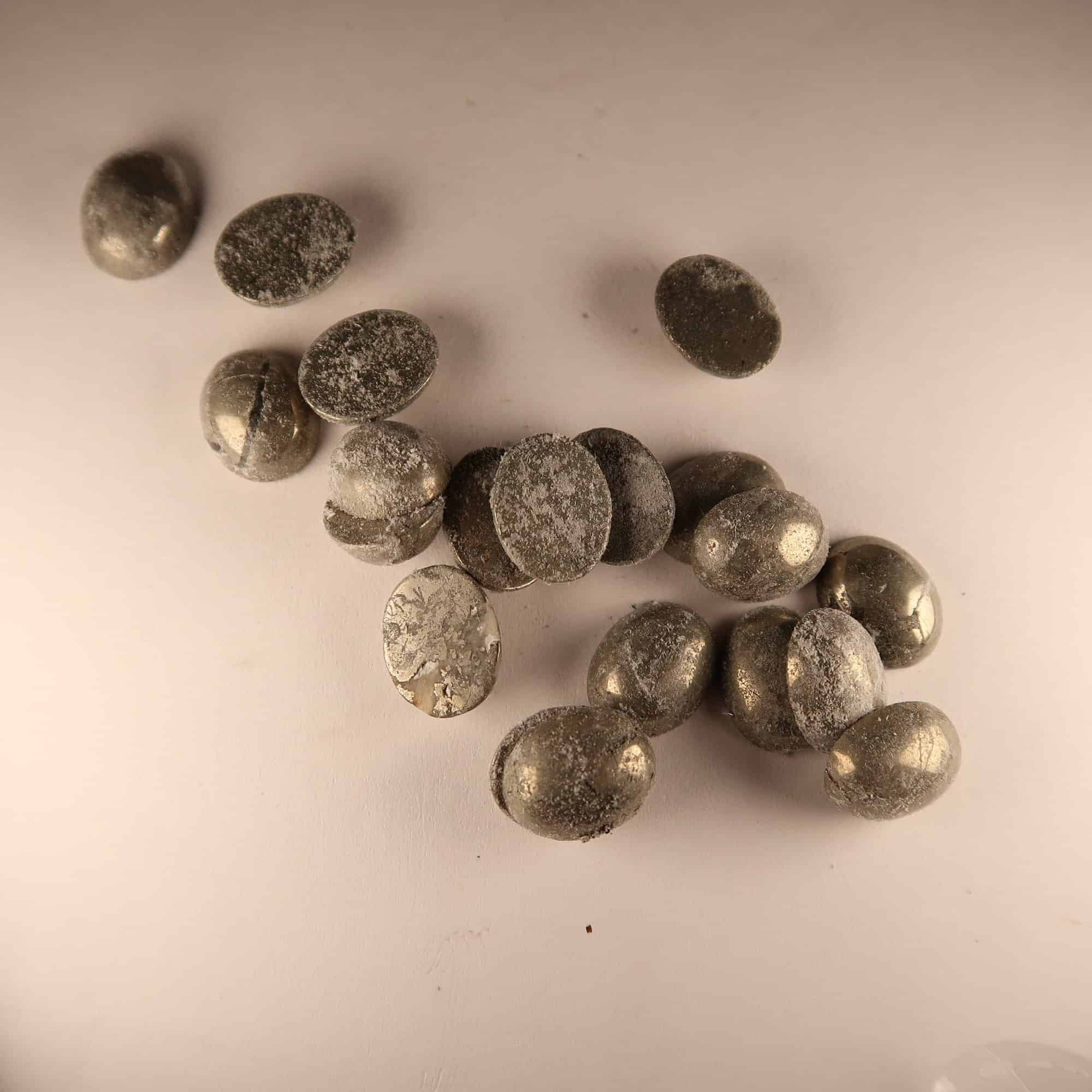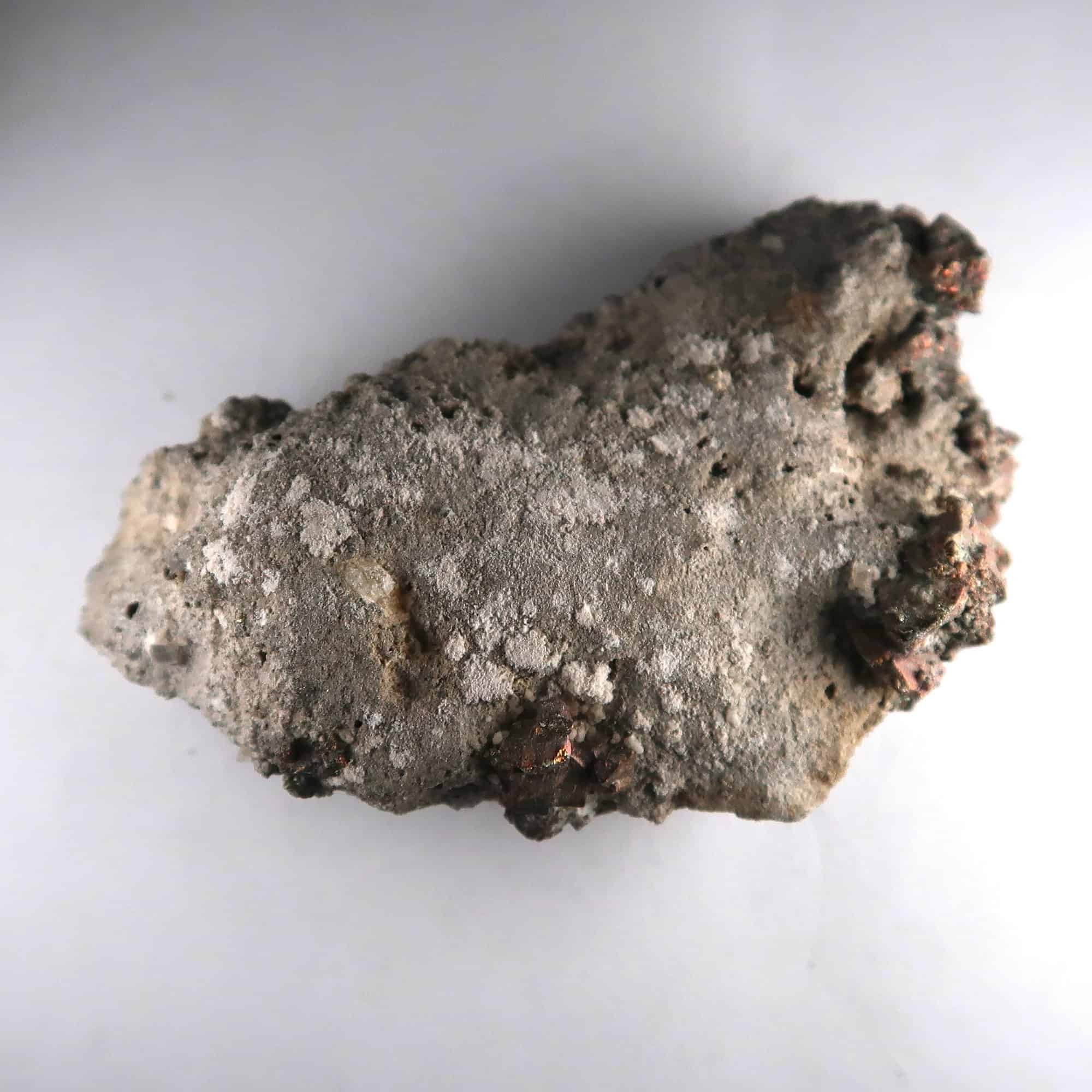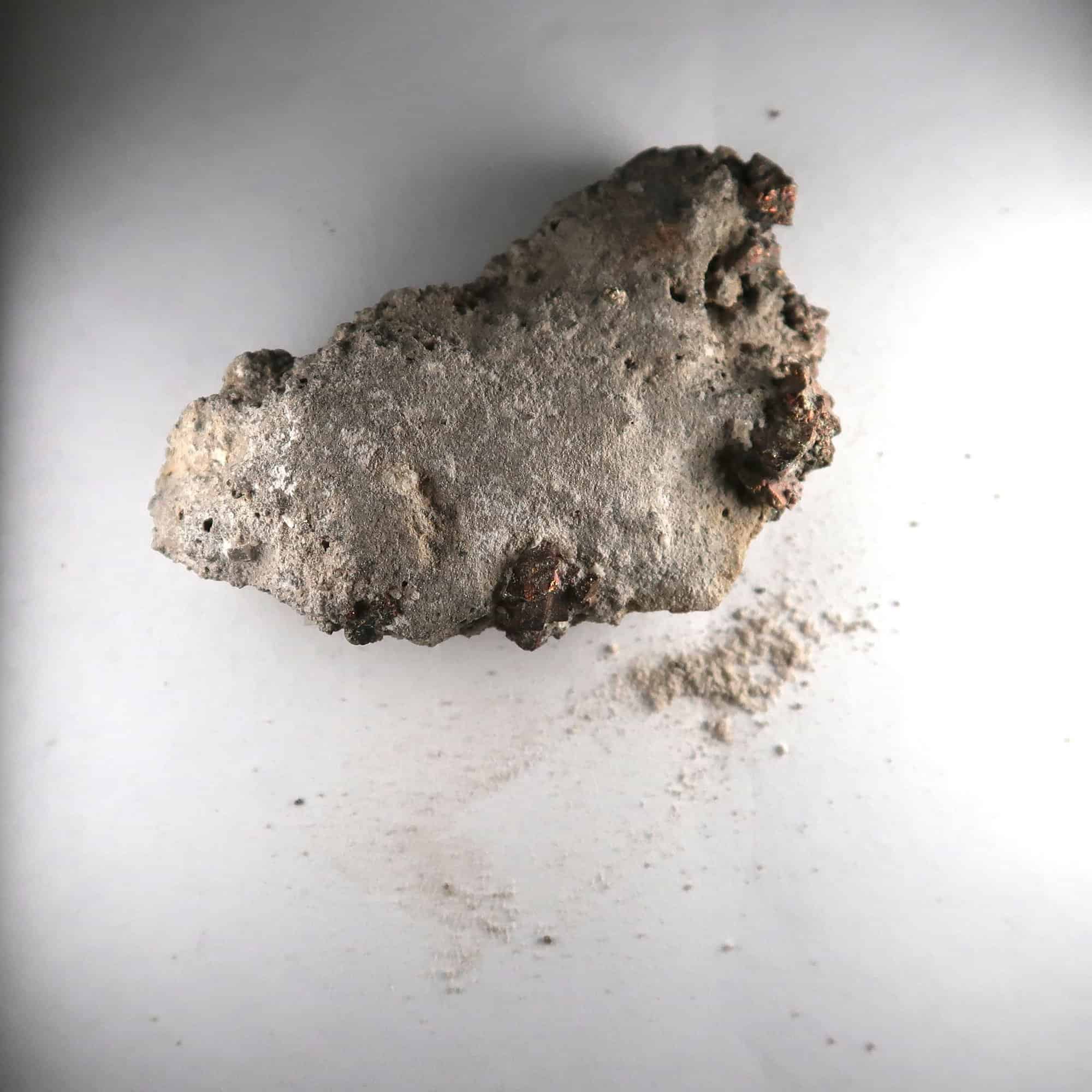Pyrite is a mineral common to many mineral collections and to collectors – otherwise known as ‘iron pyrite’ or ‘fools gold’, due to an occasional superficial appearance to gold. The unusual crystal formations of many Pyrite specimens make it a really popular collectors piece. In addition, some if the nicest British fossils are pyritised – Lyme Regis and Whitby areas both offer many pyritised ammonites and marine reptile bones.
The issue is, unfortunately, a process commonly known as Pyrite rot or Pyrite decay. It is not a disease, as many people claim; just a chemical reaction.
It is not restricted purely to Pyrite (iron sulphide) – Marcasite (iron sulphide), Arsenopyrite (iron arsenic sulfide), pyrrhotite (iron sulfide) and other sulphide minerals can be affected.
Some very nice specimens are damaged and/or lost due to the effects of pyrite decay; some of the Jurassic ammonites from around Charmouth are extremely prone to pyrite decay unfortunately – RIP the one I collected and forgot about..
Some pieces from around the world are, however, completely unaffected by it – or, at least, have been in collections for several hundred years with no visible effects; whether this will change over a thousand years we simply don’t know.
What is it?
When Pyrite is exposed to water and air it begins to oxidise, and this can lead to a fairly rapid ‘decay’. I have seen pieces develop pyrite rot within a few weeks, certainly less than two months. Some museums have specimens which have degraded over years or decades.
The chemical composition of the material begins to change and the specimen often begins to change – at first by expelling a whitish or yellowish powder and eventually by beginning to dissolve entirely.
The chemical composition and transformation is as follows: (4FeS2 + 13O2 + 2H2O) >> (4FeSO4 + 2H2SO4 + 2SO2) – (pyrite, oxygen, water) >> (ferrous sulphate, sulphuric acid, sulphur dioxide)
Pyrite decay in cabochon cut pieces of Pyrite; this would have certainly occurred after the stone was set if sold untreated.


Before and after brushing off several spots of pyrite decay from a specimen of Pyrite and Calcite on matrix, Missouri, USA.
The matrix rock remained unaffected; the Pyrite dissolved into an acidic powder, and the Calcite (where in direct contact) was also damaged.


How can it be prevented?
Preventative treatments: There have been numerous chemical methods of preventing Pyrite rot; likely the easiest is a product called PyriteStop.
Controlled Environment: Maintaining a stable environment is crucial for preserving pyrite specimens. Storing them in a controlled environment with regulated temperature and humidity levels can help mitigate the impact of oxidation. Using dehumidifiers can reduce moisture levels, slowing down the decay process. In the case of high quality specimens an oxygen indicator or humidity indicator inside their case may be prudent. On this note – glass or metal cabinets are preferred over wood as certain types of wood release acidic gases; tannic acid specifically.
Protective Coatings: Applying a protective coating on pyrite specimens can act as a barrier against environmental factors. Conservation grade removable polyurethane or clear acrylic coatings are commonly used to create a thin, transparent layer that shields the surface of the specimen. The most popular of these is probably Paraloid B-67.
Regular Maintenance: Routine inspection and maintenance are crucial for the preservation of pyrite specimens. Regularly examine the specimens for signs of decay, such as discoloration, dust, or crumbling. Gently cleaning the specimens using soft brushes or compressed air can remove dust and debris, preventing potential deterioration.
Further reading:
https://www.researchgate.net/publication/261713254_Pyrite_Decay_cause_and_effect_prevention_and_cure
https://www.zoicpalaeotech.co.uk/pages/pyritefossils
